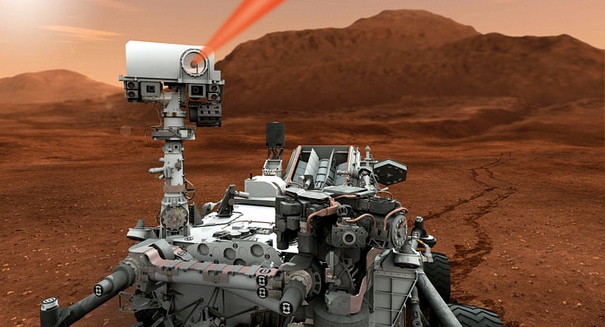
Curiosity discovers a lack of methane on the Red Planet.
Though it searched high and low, the Curiosity rover has found no traces of methane on Mars. Researchers had hoped finding this gas on the solar system’s fourth planet would bolster the theory that Mars holds the potential for life, but NASA’s paper published today by Science Magazine has pretty much dashed that dream.
The rover’s findings go against what scientists had first believed based on reports from telescopes and satellites, which had seen small but still significant amounts of the gas. Curiosity landed on Mars in August 2012 and immediately began scanning components on land and sucking in the air. No traces from what Curiosity gathered could be found within the limits of the Tuneable Laser Spectrometer’s (TLS) sensitivity. If methane is actually on Mars, it had to be less than 10,000 tons for Curiosity not to detect it.
“Based on previous measurements, we were expecting to go there and find 10 parts per billion (ppbv) or more, and we were excited about finding it. So when you go to search for something and you don’t find it, there’s a sense of disappointment,” said Dr. Chris Webster, the principal investigator on Curiosity’s TLS.
On Earth, microbial organisms make 95 percent of the methane in the atmosphere. Most of us know about methane as the gas produced by cattle. Based on that knowledge, scientists had hoped that the methane detected on Mars by the satellites and telescopes would indicate life. Other sources could bring methane to a planet’s atmosphere—comets or asteroids from space or geological processes—but it was the possible life forms that most planetary scientists were hoping for.
Many scientists still have faith in the possibility of life forms on Mars, just not so much the ones that produce methane. “There could still be other types of microbes on Mars. This just makes it harder for there to be microbes that kick out methane,” said team-member Professor Sushil Atreya from the University of Michigan in Ann Arbor.
Still others are hoping for more precise measurements from the Curiosity rover. Dr. Olivier Witasse, the project scientist on the European Space Agency’s (ESA) Mars Express satellite that made the first claimed methane detection in 2003, also said he wanted to see more data. “There is some indication from the Mars Express data—and it has not been published yet because it’s a very complicated measurement—that the methane might peak at a certain altitude, at 25-40 km. The Curiosity results are interesting, but they have not yet settled the issue.”
Leave a Reply